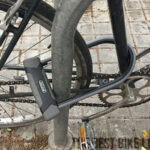As part of San Diego’s commitment to sustainability and its Climate Action Plan, the city is actively enhancing its bicycle infrastructure to provide residents and visitors with more eco-friendly transportation options. This initiative focuses on expanding and improving bike lanes and routes, encouraging more people to embrace cycling as a mode of transport and recreation throughout San Diego. Whether you are a daily commuter or a weekend adventurer, understanding the bike trail options available is key to navigating San Diego on two wheels.
Explore San Diego Bike Route Maps
Navigating San Diego’s diverse terrain becomes easier with the aid of comprehensive bike maps. These maps are invaluable tools for planning your cycling journey, whether you’re looking for a scenic coastal ride or a quicker route through the city. By consulting these resources, cyclists can efficiently chart their course and discover routes that suit their needs and preferences.
Understanding San Diego Bike Facilities
San Diego, following the guidelines set by the California Highway Design Manual, offers a variety of bicycle facilities designed to cater to different cycling needs and ensure rider safety. These facilities are classified into four main types, each offering a unique riding experience:
Class I Bike Paths (Shared-Use Paths)
Class I bike paths, also known as shared-use or multi-use paths, are dedicated spaces exclusively for cyclists, pedestrians, and other non-motorized users. These paths are physically separated from roadways, offering a safe and serene environment for biking, often located within parks, along riverbeds, or in other scenic areas away from vehicle traffic. They play a crucial role in connecting different parts of the city where roads may not be suitable or safe for cycling.
Class II Bike Lanes
Class II bike lanes are perhaps the most commonly recognized bike facility. They are marked by pavement striping and signage within roadways, designating a specific lane for preferential or exclusive bicycle travel. These one-way lanes run along the sides of roads, effectively separating cyclists from the main flow of vehicular traffic. To further enhance safety and connectivity, these lanes often incorporate additional features like warning signs and wayfinding markers, especially in areas with specific challenges.
Class III Bike Routes (Shared Roadways)
Class III bike routes are designated on streets that are shared with motor vehicle traffic within the same lane. Identified by specific signage, these routes serve to connect different bike facilities or to indicate preferred cycling paths through areas with high bicycle traffic. To improve safety on these shared roadways, treatments such as “Sharrows,” or shared lane markings, are often used to clearly indicate the shared nature of the space between cyclists and drivers.
Class IV Cycle Tracks (Protected Bikeways)
Cycle tracks, or Class IV facilities, represent a more advanced approach to bike infrastructure. These protected bikeways offer an exclusive space for cyclists that combines the feel of a separated path with the convenience of an on-street lane. Cycle tracks are physically separated from both motor vehicle traffic and sidewalks, often using barriers like posts, parked cars, or a combination of both. These facilities aim to provide a higher level of safety and comfort for cyclists.
Bicycle Detection at Signals in San Diego
To further support cyclists, the City of San Diego is proactive in ensuring bicycle detection at traffic signals. This system is designed to recognize bicycles at intersections, helping to trigger signal changes that accommodate cyclists efficiently. By correctly positioning your bike at the signal detection areas, you can ensure smoother navigation through intersections.
By understanding and utilizing these bike trails and facilities, cyclists can fully enjoy and safely navigate the beautiful city of San Diego.

